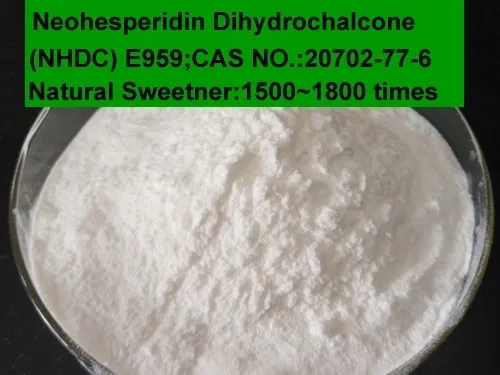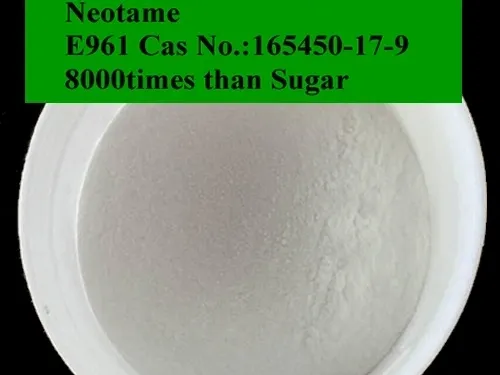CAS No.: 90-80-2
Other Names: 1,5-Gluconolactone; D-Glucono-1,5-lactone; D-Aldonolactone; D-Glucono-delta-lactone; Gluconic acid lactone; Gluconic lactone; Glucono delta-lactone;delta-Gluconolactone
MF: C6H10O6
EINECS No.: 202-016-5
FEMA No.: E575
Type: Acidifier,Preservative,Antibacterial agents
Color: pure white
Assay: 99% min
CategoryFood Emulsifiers
Product TypeGlucono delta-lactone (GDL) - E575

Product description
Glucono delta-lactone (GDL) is a neutral cyclic ester of gluconic acid, manufactured with the acid by fermentation of glucose.GDL is a fine, white crystalline powder.breaks down at about 153℃. It is easily soluble in water, slightly soluble in ethyl alcohol, insoluble in ethyl ether. This product is practically odorless. it has a slightly sweet taste. Non toxic, it will be completely metabolised in the system just like a carbohydrate. can be utilized as protein coagulant, sour agent, leavening agent, preservative and used in the production of cosmetic and toothpaste.
When added into an aqueous solution, Glucono delta lactone (GDL) will rapidly dissolve, and subsequently slowly hydrolyse to gluconic acid. Glucono delta lactone (GDL) will ensure a progressive and continuous decrease of pH to equilibrium. Because it lowers the pH, it utilized in the food avoid deterioration by enzymes and microorganisms as preservative
Glucono delta lactone (GDL) is a natural constituent of many foods. It is widely found in honey, fruit juices, wine and a lot of fermented products. As a natural food acid, Glucono delta lactone (GDL) contributes to the tangy flavor of various foods.
Package
- 25kg/Bag 16 tons/20’f container
Shelf life & storage condition
- Stored at 25 /77 ℃ max and 80% relative humidity max.
- 24 months in original package away from sunlight and odorous products.
Usage
- 0.1% – 5%
Applications
Glucono delta lactone (GDL);D-gluconolactone, Delta-gluconolactone, USP Grade, FCCIV or Glucono-1,5- Lactone is the raw material for flavoring agent, tofu coagulant, PH reducing agent, leavening agent,and preservative agent.
1. Tofu coagulant
GDL is white and tender, no bitter taste, no protein loss.
2. Gelling agent for dairy products
Can also be in the production of yogurt or cheese.
3. Quality improver
Able to be applied in pork luncheon meat and canned pork, to improve the effect of colorant.
4. Acidifying agent
Could be applied in fruit syrup or jelly with flavors as vanilla extract, chocolate, banana, etc.
5. Chelating agent
Widely used in dairy products asand even in beer industry, etc.
6. As a moisturizer, pH adjuster, and sequestrant or chelating agent in cosmetic industry
GDL is generally considered suitable for all skin types, including sensitive skin, and is non-irritating and antioxidant. The multiple hydroxyl groups on GDL molecule attract water, resulting in a moisturizing effect when added to skin care formulations. Given their ability to condition and hydrate skin, GDL-containing formulations may even smooth skin texture and reduce the appearance of fine lines and wrinkles. ensures a progressive and continuous decrease of pH to equilibrium. So it is utilized as a slow release acidifier in formulations.
7. As preservative in food: Widely used acidulant in meat products, especially for dry cured sausages. This product is utilized when a slow release of acid is required. In the presence of water it reverts to gluconic acid. The lowering of the pH inhibits growth of bacteria and accelerates the drying. When comes to the usage, GDL is often combined with Sodium Benzoate, which is a traditional preservative, where it can potentiate the preservative and enhance the microbial tolerance of the finished product. GDL can also be combined with other antimicrobial or antifungal ingredients whose activity is dependent on a low pH. It will also work together with Leucidal Liquid, Leucidal Liquid SF, Potassium Sorbate, Sodium Benzoate, Optiphen, Optiphen Plus, and Optiphen ND, etc.











